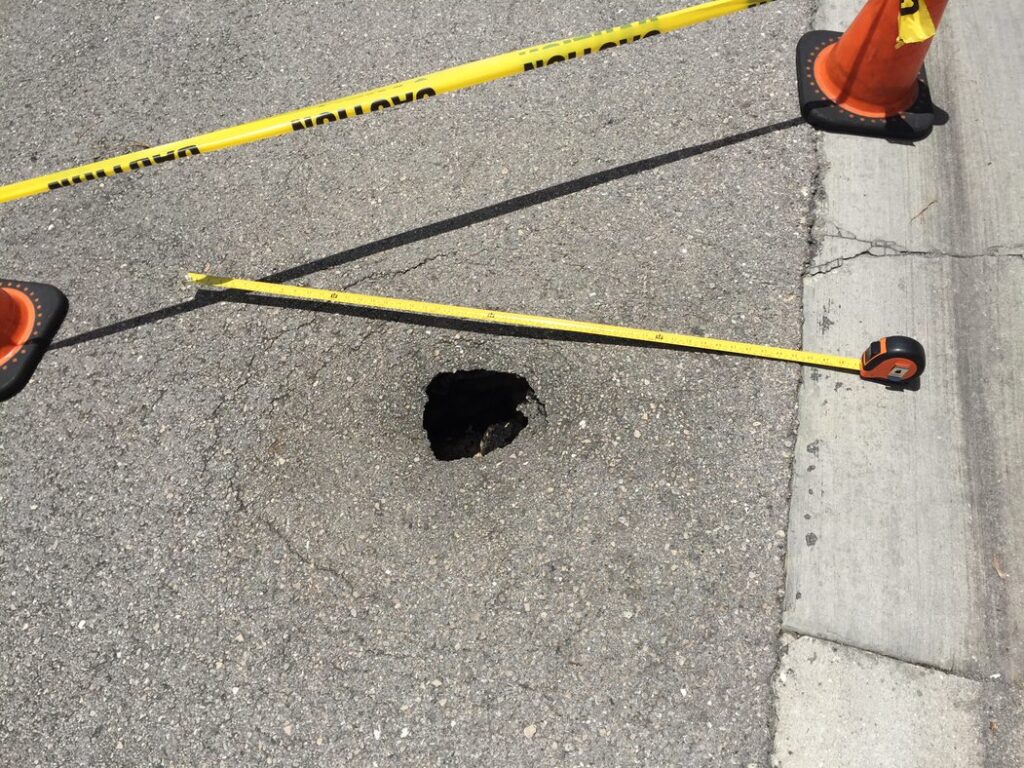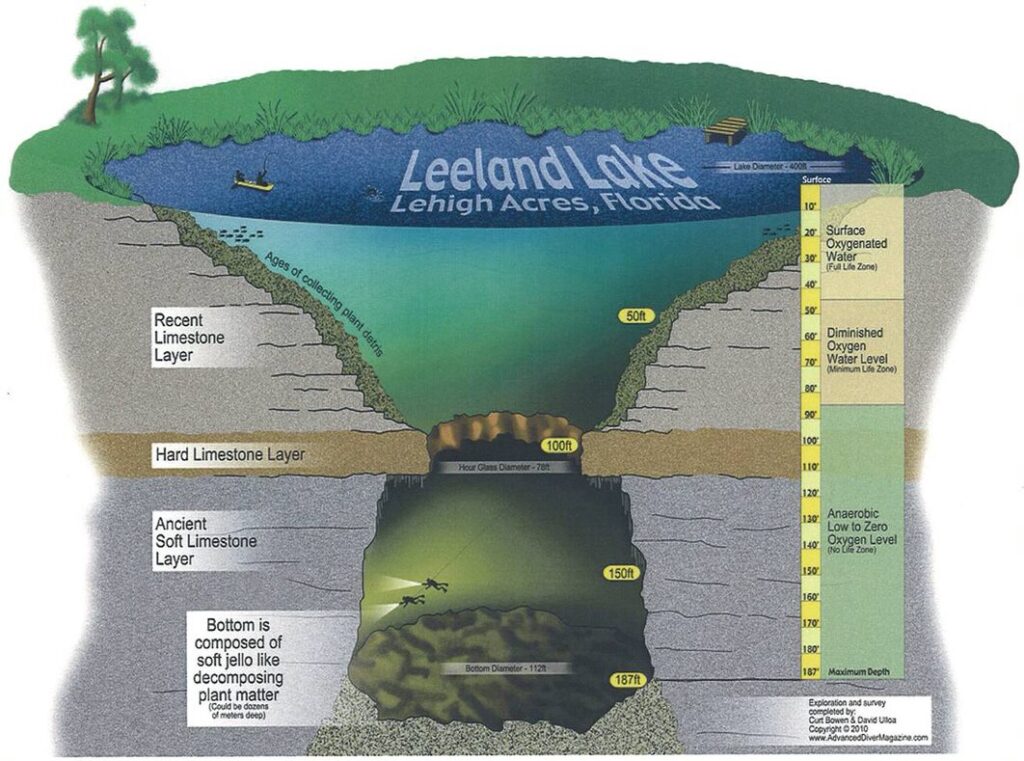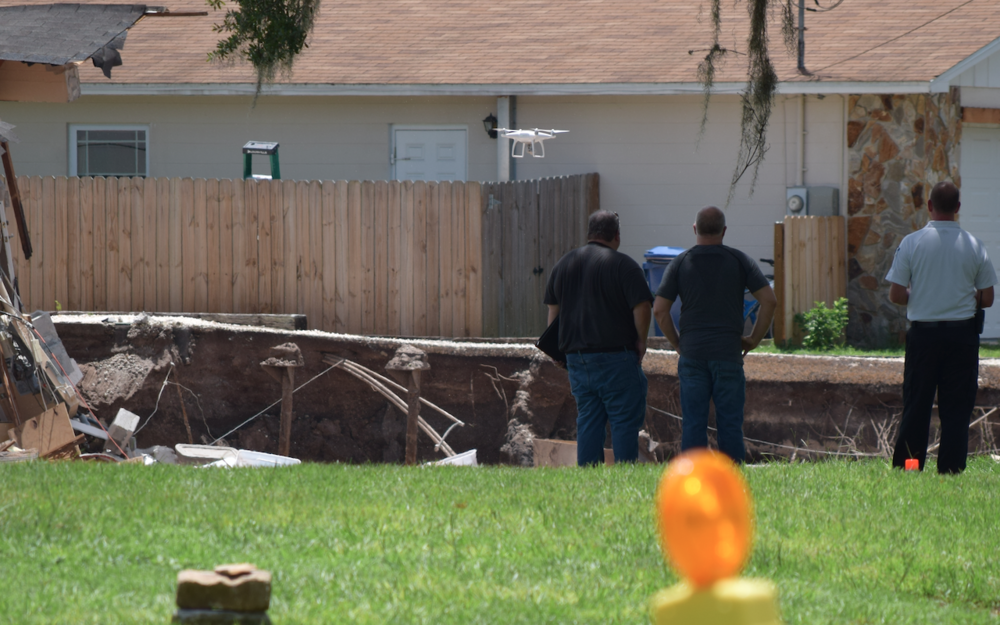
Sinkholes in Southwest Florida
Although they are not a common occurrence, sinkholes do occur in southwest Florida. The largest and most notable sinkholes in southwest Florida are Leeland Lake in Lehigh Acres and Deep Lake in eastern Collier County. Leeland Lake is approximately 400 feet in diameter, has been measured at 208 feet deep, and was created during the Paleolithic period 2.5 million year ago. Deep Lake is approximately 90ft deep and 300 ft in diameter. Although smaller in size and notoriety, many other sinkholes have also occurred in southwest Florida.

Many of the small lakes and ponds surrounding the Southwest Florida International Airport are actually ancient sinkholes. In fact, during the construction of the current airport terminal and the recent taxiway expansion project, numerous karst (sinkhole) features in the subsurface limestone had to be grouted in order to prevent future problems.
Dozens of sinkholes have also been documented along the US-41 corridor in Collier County spanning from Immokalee Road down to County Road 951. The shallow limestone in this area is severely deteriorated and has caused significant settlement and damage to numerous homes and businesses in this area.

Typically, southwest Florida sinkholes are both smaller in depth and diameter than the ones we see on the news having occurred in Tampa, Orlando, and northern Florida. This is because the limestone layer in southwest Florida is part of the Pliocene Tamiami Formation and is generally shallower and thinner than those occurring to our north. Our local sinkholes are generally considered “subsidence sinkholes” characterized by the slow downward movement of the ground surface. This often results in several inches of settlement occurring over the course of several months. This type of sinkhole is far less dangerous than the catastrophic collapse sinkholes that occur in northern Florida but can still cause significant property damage.

The first signs of sinkhole damage often occur suddenly after many years of a structure’s existence. Uneven settlement of the floor slab and stair-step cracking in the exterior walls are two of the most common signs. If these signs occur, it is best to contact a qualified geotechnical engineer to investigate the cause of the problem.
The author of this article has personally been involved in the investigation and remediation of two paleo-sinholes in the North Naples area. In both cases, the sinkholes originally occurred millions of years ago and were filled in by organic materials over time. In modern times, houses were built on these sites and eventually settlement of the houses occurred. The remediation of these properties consisted of injecting cementitious grout into the ground to fill the subterranean voids in the limestone and compact loose soils. Deep foundation piles were also used to lift up and support the houses.

Until recently, home insurance companies generally covered sinkhole damage claims. However, recent changes to insurance laws have allowed insurance companies to exclude sinkhole damage unless a sinkhole rider is specifically purchased.
*The author of this article is a Florida licensed Geotechnical Engineer and is certified by the National Speleological Society for SCUBA diving in underwater caves and sinkholes.







